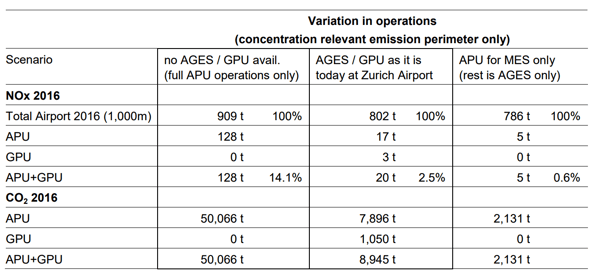Traditionally, most airlines poorly track APU usage on the ground, and utilization tends to be much higher than reported, including when alternatives exist: GPU, ACU, and 400 Hz power.
Since it represents a significant opportunity to save fuel when your aircraft are on the ground, let’s see how airlines are tracking APU fuel consumption and how, as a pilot, you can reduce it.
What you'll learn: |
An Auxiliary Power Unit (APU) is located onboard the aircraft to provide electrical power on the ground to ensure turnaround operations, when the main engines cannot be used.
APU can also be used in flight or during taxi in some specific situations (such as engine failure or single-engine taxi) to complement the energy supplied by the engines or by the batteries.
Once the APU is running, it provides power to start the aircraft’s main engines. It is then usually turned off as soon as engines are switched on.
The APU runs on fuel and generally represents about 2-2.5% according to IATA.
Excessive APU usage often results from inadequate Ground Operations coordination and/or SOPs. Since different departments influence the use of APUs (Flight Operations, Ground Operations, maintenance, and engineering), all parties must adhere to a clear APU policy. Educating about the actual cost of running APUs should be part of this process.
The hourly cost can range of running APU is from USD 100 to USD 400. It consumes a lot of fuel and causes noise, pollution, and maintenance costs.
According to United Continental, APU uses 150 to 400+ kg of fuel per hour, while Ground Power Units (GPU) provided by the airport use less than 20 kg of fuel per hour.
|
Aircraft Type |
APU consumption |
|
A320 |
126 Kg/h |
|
A330 |
210 Kg/h |
|
B737 |
110 Kg/h |
|
B777 |
312 Kg/h |
|
CRJ 200 |
100 Kg/h |
Table 1: APU fuel consumption for various aircraft types (Source: IATA)
Boeing 737 APU fuel consumption is 110 kg/hour. A320 APU fuel burn is 126 kg/hour.
A. Avoid dual-use of APU and ground systems.
Air Conditioning Units (ACU) and Ground Power Units (GPU) can also provide energy on the ground but should not be deployed in addition to the APU. Therefore, monitoring the usage and fuel consumption of the APU on the ground enables checking if the APU is being used for dual purposes with these ground systems.
B. Reduce fuel consumption and maintenance.
Limiting APU usage using GPU and ACU ensures significant fuel consumption and maintenance savings. It also has a positive environmental impact, significantly reducing CO2 emissions and noise levels.
That’s why airlines are more and more interested in tracking the usage of APU on the ground.
A quick computation shows that an airline that operates 50 single aisle aircraft and 10,000 flights a month would burn more than 10,000 tons of fuel if the APU is left on during the 45’ turnaround time.
Table 2 presents the benefits of the APU mitigation option (of the total Zurich airport emissions):

Table 2: Operational variations in APU usage for Zurich Airport - 2016
2 different sources are used to monitor APU fuel consumption:
-
A custom ACARS message which is configured to be sent every time APU is turned on or off (trigger condition) and which contains general APU information: runtime, cycles, fuel consumption, etc.
-
FDR data during turnaround. Usually, FDR only records when at least one engine is running. However, some providers offer the possibility of keeping FDR recording during the whole turnaround phase, which allows airlines to have APU information (as well as all other parameters) available.
Some airlines have this data automatically imported into a comprehensive fuel management system that lets them analyze APU usage based on multiple conditions (aircraft type, station, weather, cargo content, etc.) and that shares this information with pilots.
Switching off the APU is a good practice, but could interact with other fuel-saving procedures such as EOTI (Engine-Out Taxi In) and EOTO (Engine-Out Taxi Out).
On some aircraft, for fire safety reasons, it's mandatory to keep the APU running when shutting down an engine during taxi.
However, newer-generation aircraft can support procedures like SETWA (Single Engine Taxi Without Auxiliary Power Unit), allowing taxiing with one engine and no APU.
You completed the APU module!
Some tips to reduce your APU fuel burn
- When conditions permit, coordinate switching the APU on/off with switching the engines off/on to avoid having two sources of energy running simultaneously.
- The airport's Ground Power Units (GPU) use less than 20 kg of fuel per hour. Limit APU usage using GPU when possible.


